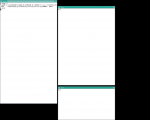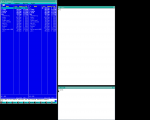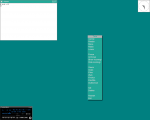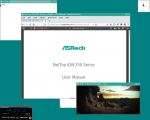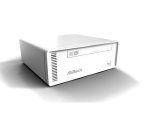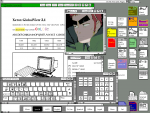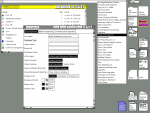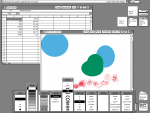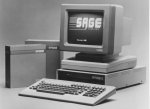share your desktop! (again)
- Anmelden oder Registrieren um Kommentare zu schreiben
That's funny. 1991 is the year I started my present career. Video has come a long way, they were still trying to figure out how they would sync up audio. But by the mid to late 90s, you could watch thousands of movies on DVD. The 80s were the stone ages of personal computing compared to the 90s.
I've been busy trying to get Iomega's Zip100 drive to work. I have a parallel port external drive Zip100 from around 1996.
Finally, I managed to make it work in FreeBSD, but in a read-only mode. I had probably write-protected them 15 years to 20 years ago. The write protection is in hardware, and only Iomega's own software can erase it. So I had to install Win98 in a VM, install the Iomega Tools software and unprotect the disks. Now that the disks have been liberated, I can write to the disks in FreeBSD.
I noticed the drive was excruciantingly slow in the VM. It's pretty fast when on bare iron in FreeBSD. I could even watch a modern video ('diffie.mp4) from the disk. In the VM (W98), a megabyte took a few minutes to copy or read. FreeBSD speed around maybe 20 megabytes a minute.
kldload vpo #load parport module
mount -t msdosfs /dev/da0s4 /media #mount disk as 4th slice
https://docs.freebsd.org/doc/6.1-RELEASE/usr/share/doc/en/articles/zip-drive/article.html
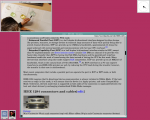
I think I donated my old zip drive about 10 years ago. I remember when those were the most advanced storage solution available. It was a nice upgrade from doing tape backups.
FBSD create a new file system (FAT):
newfs_msdos /dev/da0
Ten minutes of video (87MB) fills up the disk. It only takes a few minutes to write the data, though. I remember formatting and writing floppies took ages (1.44MB).
I say, this parallel port is fast. I didn't know there were "fast" printer ports. In a VM (Win98), the disk took ages to load anything – several minutes to display a simple 1 megabyte jpg.
That IS an EXCELLENT fit for the shot. Haha.
xterm refuses to yield the battlefield...
Simple plain vanilla KDE Plasma desktop.
My favorite movie on Tibetan Buddhism is Samsara (2001) by Director Pan Nalin. If you haven't seen it you are missing a real treat. Shot on location at monasteries high up in the Himalayas in Ladakh, with mostly locals and a few imported stars. Watch or download from here: https://archive.org/details/Samsara-PanNalin
That's still a profound movie. That and Blade Runner still make me think about life and existence pretty deeply after all these years.
Not obvious from the screenshot, this desktop (TWM) has some "refinements", eg. 'RandomPlacement' and 'OpaqueMove' (no more grid outlines when starting windowed programs or dragging windows on the desktop).
Here's my twmrc dot-file (see attachment tar file).
What's remarkable, twm (and FreeBSD 11.3-RELEASE 64-bit) works very well, quite fast, on an Atom processor (ASRock Ion 330 nettop 2009). It's more or less usable as a desktop computer for everyday basic web surfing in 2019. Videos up to 720p are smooth (I can watch Space Odyssey and listen to Glen Campbell at the same time and surf the web).
| Anhang | Größe |
|---|---|
| twmrc.tar | 4.5 KB |
Xerox GlobalView 2.1 from 1996.
Awesome pictures and story are here: http://toastytech.com/guis/gvedit.png
Nathan's site is the best place to get a glimpse of old GUIs.
> Yep. Still using Trisquel in 2020.
You've got that XFCE looking very nice!
Thanks! Honestly XFCE is so underrated. I've used GNOME3, Unity, KDE, Enlightenment, i3, and dwm, but I always come back to my XFCE. Super lightweight on system resources, can be made to look 'elegant', and most importantly very stable and reliable.
Look at Zorin OS Lite for some inspiration on what can be done design-wise with XFCE.
SAGE II computer, 1982.
https://web.archive.org/web/20131022030145/http://sageandstride.org/html/screenshots.html
- Anmelden oder Registrieren um Kommentare zu schreiben








